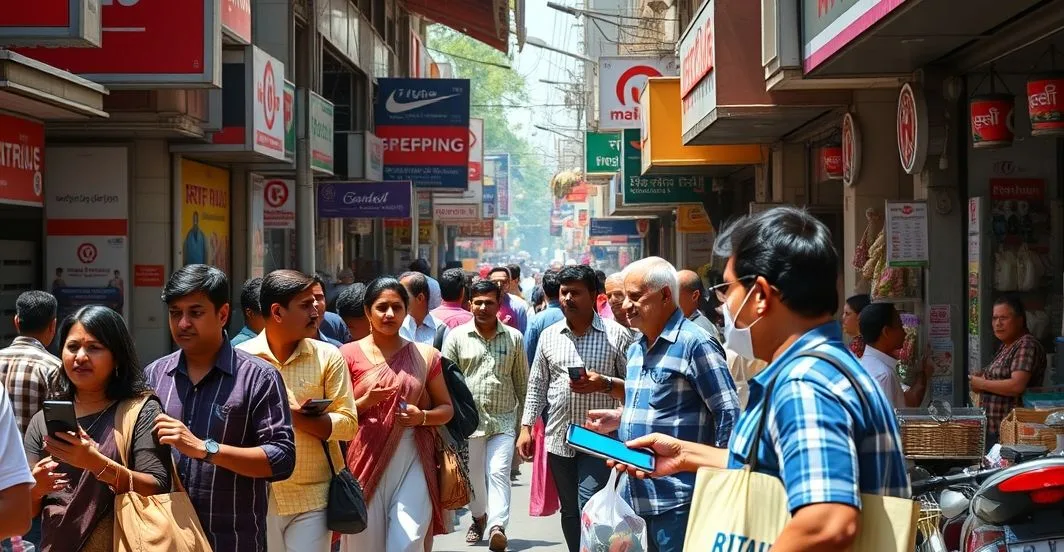Auto-published by Growwh – a smarter way to scale content and marketing. Want to know more? Chat with us.
NeoGrowth’s NeoInsights finds 74% of retail spends in 29 cities are digital. Study of 21k+ MSMEs reveals city leaders, category trends and business impact.
India’s Retail Payments: A Digital Breakthrough
India’s retail economy is undergoing a sharp transformation: digital payments have moved from convenience to the core of everyday spending. According to NeoGrowth’s 9th edition of the NeoInsights study, How India Pays, 74% of all retail spends across the country’s top 29 cities are now digital, up from 45% just two years ago. In practical terms, this means that out of every Rs 100 spent on retail purchases, Rs 74 is transacted via digital modes such as UPI, debit cards and credit cards.
Ready to take your brand to the next level?
At Growwh, we help startups and emerging brands grow faster with powerful content, creator collaborations, and tech solutions.
Explore what we do →
Key city-level takeaways
The study highlights clear pockets of advanced digital adoption as well as regions still transitioning from cash. Top performers include:
- Hyderabad: 82% of retail transactions are digital.
- Bengaluru and Pune: 79% each.
Among notable non-metro leaders are Visakhapatnam (76%), Nagpur (71%) and Chandigarh (68%). On the other hand, several cities continue to rely more heavily on cash: Ahmedabad (60%), Kolkata (55%), Jamshedpur (54%), Madurai (52%) and Rajkot (48%). These differences point to varied infrastructure, consumer comfort and merchant readiness across regions.
Which categories lead digital adoption?
Digital payments are no longer limited to discretionary purchases. The NeoInsights data shows strong adoption across both discretionary and essential categories:
- Personal grooming: 83% digital adoption.
- Education: 81% digital adoption.
- Dining: 80% digital adoption.
- Groceries: 68% digital adoption.
- Fuel: 63% digital adoption.
These figures indicate increasing consumer comfort with paying digitally for routine, everyday needs as well as lifestyle expenses.
Retailers driving the change
Merchant-side behavior is a major catalyst. Younger entrepreneurs in their 20s and 30s report that nearly 80% of revenues now come from digital payments. More experienced retailers (50+) have also rapidly closed the gap: their outlets’ digital share rose from about 40% two years ago to 68% today.
Smaller businesses have been at the forefront of adoption: retailers with less than Rs 1 crore in turnover record 79% digital transactions, outpacing larger businesses, which stand at 63%. The study’s insights are drawn from over 21,000 MSME retail outlets across 29 cities covering more than Rs 35,000 crore in annual revenue, underscoring that this is not a niche trend but a structural shift.
Why this matters: economic and consumer implications
The rise of digital payments reshapes the way India consumes, saves and grows. With the digital economy projected to contribute one-fifth of national income by 2030, widespread digital payments mean:
- Greater transparency: Digital trails improve bookkeeping, credit access and compliance for MSMEs.
- Improved convenience: Consumers benefit from faster checkouts, contactless options and integrated loyalty.
- Faster adoption cycles: Younger merchants and small businesses are leapfrogging legacy cash models.
- Geographic convergence: Non-metros are catching up, reducing urban-rural digital divides in retail.
Practical steps for retailers and policymakers
To accelerate and sustain this transition, the following actions can help merchants and decision-makers:
- Simplify onboarding: Make QR acceptance and digital POS setup faster and affordable for small merchants.
- Promote digital literacy: Train staff on reconciliation, refunds and UPI workflows to reduce friction.
- Incentivize frequent use: Offer cashback, bundles and loyalty for customers paying digitally.
- Strengthen infrastructure: Improve last-mile internet reliability and power backups in smaller towns.
- Data-enabled credit: Use digital transaction histories to broaden MSME credit access and working capital solutions.
What businesses should watch
As digital payments become the default, businesses should track three KPIs: digital share of gross receipts, transaction ticket size by payment type, and repeat customer frequency via digital channels. Optimizing these metrics will help merchants leverage the benefits of faster payments, richer customer data and improved cashflow.
Bottom line: NeoGrowth’s How India Pays confirms a structural change in India’s retail payments landscape. With 74% of retail spends now digital across major cities and rapid adoption across categories and merchant cohorts, digital payments are no longer an urban luxury but an everyday norm shaping the future of consumption.
Edited by Jyoti Narayan.
Source
This article was auto-generated as part of a smart content campaign. Curious how we do it? Chat with us to learn more about our content automation systems.
Discover more from Growwh
Subscribe to get the latest posts sent to your email.


